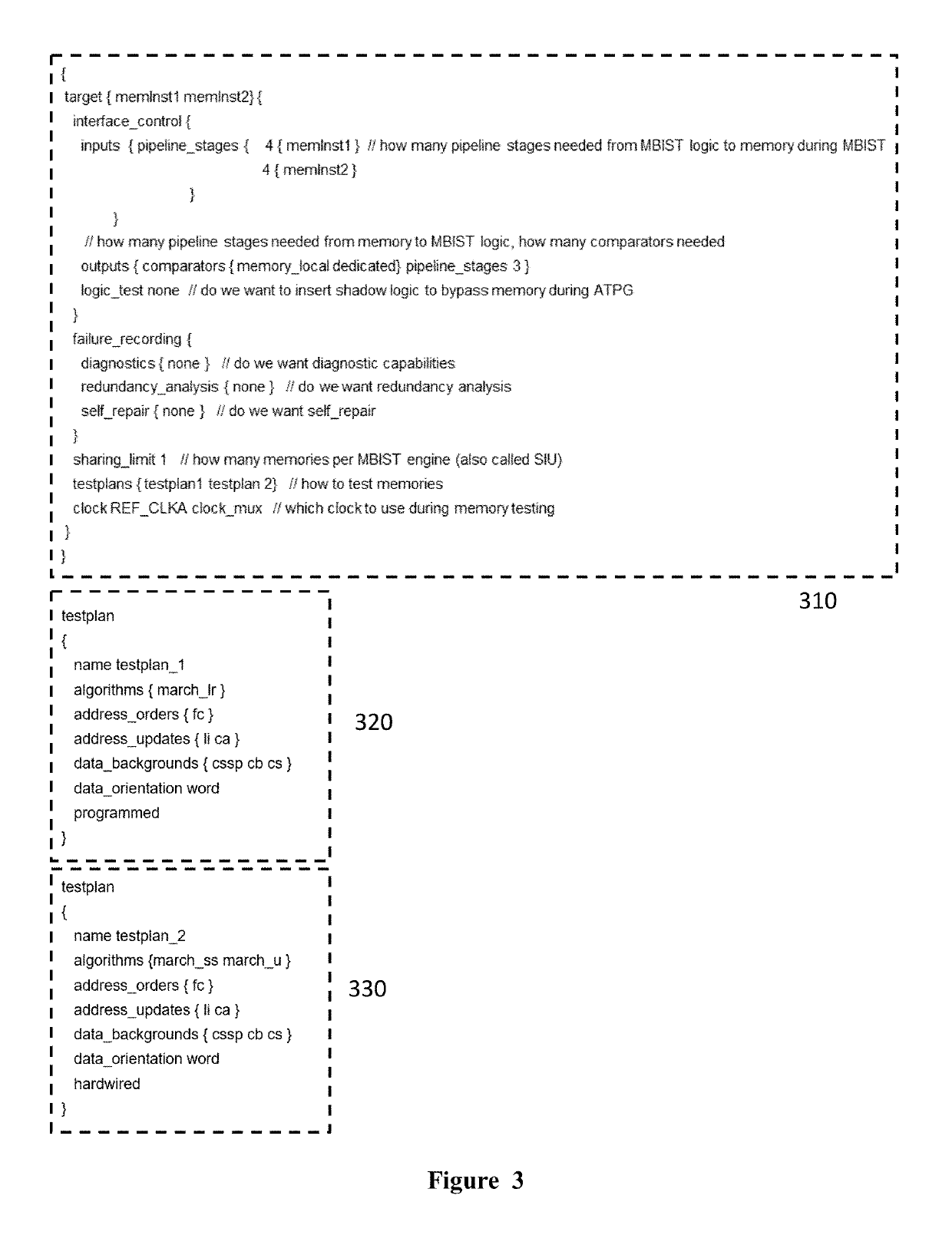Systems, methods, and computer-readable media utilizing improved data structures and design flow for programmable memory built-in self-test (PMBIST)
a programmable memory and self-testing technology, applied in the field of integrated circuit design and testability, can solve the problems of reduced soc yield due to embedded memory, increased potential faults or defects, and reduced soc yield, etc., to facilitate more robust analysis of design requirements.
- Summary
- Abstract
- Description
- Claims
- Application Information
AI Technical Summary
Benefits of technology
Problems solved by technology
Method used
Image
Examples
Embodiment Construction
[0020]FIG. 1 is a block diagram of an exemplary PMBIST system 100 that can be utilized, for example, in an SoC design. System 100 can comprise a random access memory (RAM) 110, which is an exemplary SoC memory device to which a designer wishes to apply PMBIST principles and / or techniques described herein. As discussed above, an exemplary SOC design can comprise a plurality of memory devices such as RAM 110. System 100 can also comprise a variety of functional logic blocks 130 that can constitute the digital logic functionality of the SoC. Although two blocks 130 are shown, this is only to illustrate both input and output relationships with RAM 110, as the skilled person will readily comprehend.
[0021]System 100 can further comprise an algorithm unit (AU) 120, which embodies various PMBIST algorithms for execution by the PMBIST engine, which is illustrated as sequence iterator unit (SIU) 140. In some exemplary embodiments, AU 120 can comprise any type of readable and rewritable memory...
PUM
 Login to View More
Login to View More Abstract
Description
Claims
Application Information
 Login to View More
Login to View More - R&D
- Intellectual Property
- Life Sciences
- Materials
- Tech Scout
- Unparalleled Data Quality
- Higher Quality Content
- 60% Fewer Hallucinations
Browse by: Latest US Patents, China's latest patents, Technical Efficacy Thesaurus, Application Domain, Technology Topic, Popular Technical Reports.
© 2025 PatSnap. All rights reserved.Legal|Privacy policy|Modern Slavery Act Transparency Statement|Sitemap|About US| Contact US: help@patsnap.com



